
SaaS Spend Management: Optimizing Costs and Maximizing Value
In today’s digital landscape, businesses rely heavily on Software-as-a-Service (SaaS) applications to streamline operations, enhance productivity, and drive growth. However, as the number of SaaS subscriptions proliferates, managing and optimizing SaaS spending has become a critical challenge for organizations of all sizes. Effective SaaS spend management ensures cost control and fosters better visibility, governance, and strategic decision-making.
What is SaaS Spend Management?
SaaS Spend Management refers to overseeing and controlling the expenditure associated with Software as a Service (SaaS) subscriptions and licenses within an organization. It involves managing the procurement, usage, and optimization of SaaS tools to ensure cost-effectiveness, alignment with business objectives, and compliance with budgetary constraints. This includes tracking usage, negotiating contracts, optimizing license usage, identifying cost-saving opportunities, and ensuring that SaaS investments deliver value to the organization. Effective SaaS Spend Management helps businesses maximize the benefits of their SaaS investments while minimizing unnecessary costs and risks.
What is the cost of SaaS apps for businesses?
2019:
Businesses have made a substantial $100 billion investment in SaaS applications due to the rising demand for cloud-based software solutions. This signaled a significant move toward subscription-based business models that provide scalability and flexibility to companies of all sizes.
2020:
The COVID-19 pandemic sparked an enormous movement toward remote work and digital collaboration. Businesses quickly adjusted to this new environment, and SaaS spending increased to almost $120 billion. Organizations gave top priority to cloud-based solutions to support remote work, boost productivity, and ensure business continuity.
2021:
The momentum of digital transformation continued into 2021, with companies allocating even more resources to SaaS applications. Expenditure in this sector climbed to around $140 billion as businesses sought to modernize their operations, improve customer experiences, and stay competitive in evolving markets.
2022:
Projections for 2022 indicate a further increase in SaaS spending, potentially surpassing $160 billion. This growth is driven by the continued adoption of cloud-based services across industries and the emergence of innovative SaaS solutions catering to diverse business needs.
2023:
SaaS expenditure is expected to exceed $180 billion in 2023. Businesses are anticipated to invest heavily in SaaS applications to support ongoing digitalization efforts, harness data-driven insights, and capitalize on emerging technologies such as artificial intelligence and machine learning. This substantial investment reflects the integral role of SaaS in shaping the future of business operations and customer engagement.
2024:
In 2024, the trajectory of SaaS (Software as a Service) spending continues its upward trend, with businesses projected to invest over $200 billion in SaaS applications. This significant increase underscores the enduring importance of cloud-based solutions in driving innovation, efficiency, and agility across various industries. As organizations prioritize digital transformation initiatives and seek to capitalize on emerging technologies, the demand for SaaS offerings is expected to remain robust, fueling continued growth in the market.
2025:
Looking ahead to 2025, SaaS spending is expected to surpass $220 billion as businesses deepen their commitment to digital transformation and cloud-based solutions. Companies are anticipated to leverage SaaS applications further to drive operational efficiencies, enhance customer engagement, and innovate in response to rapidly evolving market demands. Key trends such as integrating AI-driven automation, enhanced cybersecurity solutions, and industry-specific SaaS products are likely to contribute to this growth. The continued expansion of SaaS reflects its critical role in enabling agility, resilience, and scalability across industries.
Importance of effective SaaS spend management:
Effective SaaS spend management is crucial for several reasons:
Cost Optimization:
Efficient SaaS spend management helps organizations optimize their expenditure by identifying unused or underutilized subscriptions, renegotiating contracts, and consolidating vendors, leading to significant cost savings.
Budget Control:
By closely monitoring SaaS expenses, businesses can maintain better control over their budgets and ensure that spending aligns with strategic priorities and financial targets.
Resource Allocation:
Effective SaaS spend management enables informed decision-making regarding resource allocation, allowing companies to allocate funds to high-priority areas and invest in tools that deliver the most value to the organization.
Risk Mitigation:
By regularly reviewing SaaS contracts and monitoring usage, companies can mitigate the risk of compliance issues, unexpected cost overruns, and security vulnerabilities associated with unauthorized software usage.
Scalability and Flexibility:
With proper spend management practices, organizations can scale their SaaS usage according to evolving business needs, seamlessly adding or removing subscriptions as required without incurring unnecessary expenses.
Enhanced Productivity:
By streamlining SaaS spend management procedures, teams can become more efficient and productive. This allows them to concentrate on strategic goals and core company operations, freeing up time and resources.
Vendor Relationships:
Building strong relationships with SaaS vendors through effective spend management can lead to favorable contract terms, discounts, and access to additional features or support, maximizing the value derived from SaaS investments.
Data-Driven Insights:
By analyzing SaaS usage data and expenditure patterns, organizations can gain valuable insights into user behavior, software performance, and ROI. This enables data-driven decision-making and continuous improvement of IT investments.
Compliance and Governance:
Effective SaaS expenditure management lowers the risk of financial and legal fines linked to non-compliance or illegal software usage by ensuring compliance with corporate governance standards and regulatory regulations.
Competitive Advantage:
Companies that effectively manage their SaaS spending gain a competitive edge by optimizing costs, improving operational efficiency, and leveraging innovative technologies to drive business growth and innovation.
Benefits of effective SaaS spend management:
Cost Optimization:
Efficient SaaS spend management enables organizations to identify unused or underutilized subscriptions, negotiate better contracts, and consolidate vendors, resulting in significant cost savings.
Budget Control:
By tracking and managing SaaS expenses, businesses gain better control over their budgets, ensuring that expenditures align with strategic priorities and financial objectives.
Improved ROI:
Optimizing SaaS spending ensures organizations derive maximum value from their software investments, enhancing return on investment (ROI) and driving overall business success.
Compliance:
Effective SaaS spend management helps ensure compliance with licensing agreements, regulatory requirements, and internal policies, reducing the risk of penalties and legal issues.
Enhanced Productivity:
Streamlining SaaS procurement and usage processes frees up resources and reduces administrative overhead, allowing employees to focus on core tasks and driving productivity gains across the organization.
Scalability:
As businesses grow and evolve, efficient SaaS spend management enables them to scale their software usage accordingly, adapting to changing needs without incurring unnecessary costs or complexity.
Data-driven Decision Making:
Analyzing SaaS usage data and expenditure patterns can help organizations gain valuable insights into software usage trends, enabling informed decision-making and strategic planning.
Risk Mitigation:
Proactively managing SaaS spend helps mitigate risks associated with vendor lock-in, security vulnerabilities, and service disruptions, ensuring business continuity and resilience.
Alignment with Business Goals:
Effective spend management supports innovation, agility, and competitive advantage in dynamic market environments by aligning SaaS investments with business goals and user requirements.
Customer Satisfaction:
Optimizing SaaS tools and services based on user feedback and performance metrics enhances the overall user experience, driving customer satisfaction and loyalty.
Strategies To Optimize SaaS Spending:
Regular Audit:
Conduct periodic reviews of SaaS subscriptions to identify underutilized or redundant services. Cancel or consolidate subscriptions that are not essential to your business operations.
Negotiate Contracts:
Negotiate with SaaS vendors for volume discounts, extended payment terms, or customized pricing based on your usage and needs. Explore alternative pricing models such as annual commitments or pay-as-you-go options.
Usage Monitoring:
Implement tools to track and analyze SaaS usage across your organization. Identify opportunities to optimize usage, allocate licenses more efficiently, and eliminate wasteful spending on unused features.
Employee Training:
Provide training and support to employees to ensure they fully utilize SaaS applications. Encourage best practices and efficient workflows to maximize the value of SaaS investments.
Cloud Governance:
Establish policies and controls for SaaS procurement and usage within your organization. Define roles and responsibilities, enforce compliance with security standards, and implement cost management practices to prevent overspending.
Right-sizing:
Continuously assess your SaaS needs and adjust subscription levels accordingly. Scale up or down based on changing business requirements, seasonal fluctuations, or project-specific demands.
Vendor Management:
Consolidate vendors where possible to streamline procurement processes and leverage economies of scale. Cultivate strategic partnerships with preferred vendors to access discounts and value-added services.
Optimize Renewals:
Plan for subscription renewals and negotiate terms well in advance. Evaluate the value delivered by each SaaS application and consider alternatives or upgrades that offer better functionality or cost savings.
Evaluate Free Alternatives:
Explore open-source or freemium alternatives to expensive SaaS solutions for non-critical functions—pilot new tools before committing to paid subscriptions to assess their suitability and effectiveness.
Continuous Improvement:
Improve the culture within your company. Solicit user input, monitor trends in SaaS spending, and modify your tactics as needed to maximize expenditures over time.
Challenges In SaaS Spend Analysis
Complexity of SaaS Landscape:
The vast array of SaaS applications makes it challenging to track and analyze spending comprehensively. With numerous subscriptions across departments, identifying all SaaS expenditures and their associated costs becomes increasingly complex.
Lack of Visibility:
Limited visibility into SaaS usage and spending poses a significant challenge. With centralized tracking mechanisms, organizations can monitor usage patterns, identify redundant subscriptions, or ascertain the value derived from each SaaS investment.
Shadow IT:
The prevalence of shadow IT, where departments procure SaaS solutions independently of IT oversight, exacerbates spend analysis challenges. These unmonitored subscriptions can lead to unexpected costs and security risks, further complicating spending analysis efforts.
Subscription Sprawl:
Subscription sprawl occurs when organizations accumulate numerous overlapping or underutilized SaaS subscriptions over time. Untangling this sprawl to identify cost-saving opportunities requires meticulous analysis and strategic decision-making.
Inaccurate Data and Reporting:
Only accurate or complete data can help the accuracy of spend analysis reports. Without reliable data, organizations may make suboptimal decisions or overlook critical insights, undermining the effectiveness of SaaS spend management efforts.
Contractual Complexity:
SaaS contracts often include complex pricing structures, renewal terms, and usage metrics. Analyzing these contracts and their implications for spending requires a deep understanding of contractual language and negotiation expertise.
Dynamic Pricing and Discounts:
SaaS vendors frequently offer dynamic pricing models and discounts based on usage, volume, or contractual negotiations. Monitoring and optimizing these pricing structures to ensure maximum cost-efficiency requires ongoing vigilance and negotiation skills.
Integration Challenges:
Integrating data from disparate sources, such as procurement systems, financial platforms, and SaaS management tools, presents integration challenges. Organizations may need seamless integration to compile accurate spend analysis reports and derive actionable insights.
Why should you use SaaS spend management software?
Cost Control:
SaaS spend management software helps you monitor your organization’s SaaS expenses, tracking and analyzing costs across various subscriptions and licenses.
Optimized Spending:
By identifying underutilized or redundant SaaS applications, you can optimize your spending and eliminate unnecessary expenses, ensuring you get the most value out of your investments.
Budget Compliance:
With SaaS spend management software, you can set budget limits and alerts to ensure your SaaS expenditures stay within predefined thresholds, helping avoid overspending and budget overruns.
Vendor Management:
Effectively manage relationships with SaaS vendors by centralizing contract management, renegotiating terms, and leveraging volume discounts to reduce costs.
Policy Enforcement:
Enforce policies regarding SaaS usage, such as restricting access to unauthorized applications or ensuring compliance with data security and privacy regulations.
Forecasting and Planning:
Gain insights into future SaaS spending trends and forecast budget requirements accurately, enabling better financial planning and resource allocation.
Risk Mitigation:
SaaS applications may pose security hazards. Recognize these risks and take proactive steps to reduce them, protecting sensitive data and your company from online attacks.
Scalability:
As your organization grows, SaaS spend management software scales with you, providing the tools and capabilities needed to effectively manage an expanding portfolio of SaaS subscriptions and licenses.
Streamlined Processes:
Automate tedious tasks such as invoice processing, vendor management, and compliance reporting, freeing time and resources for more strategic initiatives.
Enhanced Decision Making:
Align your IT investments with business goals and priorities by making well-informed decisions on which SaaS applications to invest in, upgrade, or retire using the extensive data and insights available.
SaaS Spend Management Best Practices:
Centralized Visibility:
Maintain a centralized system to track all SaaS subscriptions and expenditures across the organization, providing clear visibility into usage, costs, and renewal dates.
Regular Audits:
Conduct regular audits to review SaaS usage and identify underutilized or redundant subscriptions that can be terminated or consolidated to optimize costs.
Vendor Negotiation:
Negotiate with SaaS vendors to secure favorable pricing, discounts, and contract terms based on usage, projected growth, and long-term commitments.
Usage Monitoring:
Monitor SaaS usage patterns and user adoption to ensure that subscriptions align with business needs and are utilized effectively, avoiding unnecessary expenses.
Policy Enforcement:
Implement policies and guidelines for SaaS procurement, usage, and approval processes to control spending, prevent unauthorized purchases, and maintain compliance with budgetary constraints.
Optimization Strategies:
Explore optimization strategies such as rightsizing subscriptions, leveraging volume discounts, and migrating to more cost-effective plans or alternative solutions without sacrificing functionality.
Employee Training:
Train staff members and raise their awareness of SaaS Spend Management best practices. This will promote cost-conscious and responsible consumption.
Automated Tools:
Reduce manual labor and mistake rates by streamlining the SaaS procurement, monitoring, reporting, and cost optimization processes with automated tools and software.
Regular Reviews:
To guarantee continuing alignment with corporate goals and objectives, stay current on changes in the market, technology landscape, and vendor offers by frequently evaluating SaaS contracts, terms, and prices.
Cross-Functional Collaboration:
Foster collaboration between IT, finance, procurement, and business stakeholders to establish clear communication channels, align priorities, and make informed decisions regarding SaaS investments and expenditures.
Future Trends In SaaS Spend Management:
AI-driven Insights:
Integrating artificial intelligence (AI) and machine learning (ML) technologies will enable SaaS Spend Management applications to provide advanced analytics and predictive insights. Artificial intelligence (AI) algorithms will examine usage trends, vendor contracts, and market advancements to identify cost savings opportunities and optimize SaaS investment.
Real-time Monitoring:
SaaS Spend Management tools will evolve to offer real-time monitoring capabilities, allowing organizations to continuously track usage, costs, and compliance metrics. This real-time visibility will enable proactive cost management and faster decision-making.
Blockchain for Transparency:
Blockchain technology may enhance transparency and security in SaaS procurement and contract management processes. Smart contracts and decentralized ledgers can automate the verification, validation, and execution of SaaS agreements, reducing the risk of disputes and unauthorized changes.
Cost Allocation Strategies:
With the increasing complexity of SaaS usage across departments and teams, there will be a greater emphasis on developing sophisticated cost allocation strategies. Organizations will implement granular cost attribution models to allocate SaaS expenses accurately and fairly, reflecting usage patterns and business outcomes.
Multi-cloud Management:
As businesses adopt multi-cloud and hybrid cloud architectures, SaaS Spend Management solutions will need to support the management of subscriptions across multiple cloud platforms. Integration with cloud management platforms and orchestration tools will facilitate centralized control and optimization of SaaS spending in diverse cloud environments.
Sustainability Initiatives:
Environmental and sustainability considerations will influence SaaS Spend Management practices. Organizations will prioritize eco-friendly SaaS solutions and adopt metrics to measure the carbon footprint of their cloud usage. SaaS Spend Management platforms may incorporate sustainability metrics to help businesses make environmentally conscious procurement decisions.
Regulatory Compliance:
Increasing regulatory scrutiny and data privacy regulations will drive the need for enhanced compliance management in SaaS Spend Management. Solutions will offer features for tracking compliance with data protection laws, industry regulations, and vendor agreements, helping organizations mitigate compliance risks and avoid penalties.
Customization and Flexibility:
SaaS spend management solutions will advance in terms of customization and adaptability to satisfy the particular requirements of various company models and industries. Businesses will look for modular features and flexible price structures that can be customized to meet their unique SaaS procurement needs.
Collaborative Platforms:
Collaboration and integration between SaaS Spend Management platforms and other enterprise systems (e.g., ERP, CRM) will increase. Seamless data exchange and workflow automation will streamline SaaS procurement, provisioning, and cost management processes, enhancing efficiency and visibility across the organization.
Predictive Cost Modeling:
Advanced predictive analytics and modeling techniques will enable organizations to forecast future SaaS spending trends accurately. Predictive cost modeling will empower proactive decision-making, allowing businesses to anticipate budgetary requirements, optimize resource allocation, and mitigate financial risks associated with SaaS investments.
Top Tools/Software For SaaS Spend Management:
Flexera Optima:
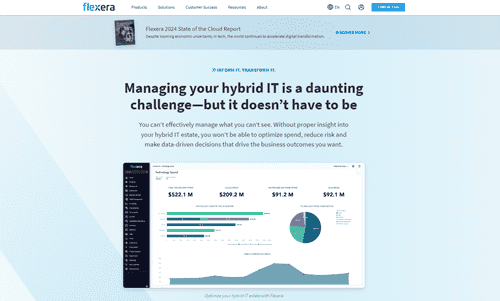
Flexera Optima offers comprehensive SaaS Spend Management capabilities, including real-time visibility into usage and costs, optimization recommendations, and contract management features.
CloudHealth by VMware:
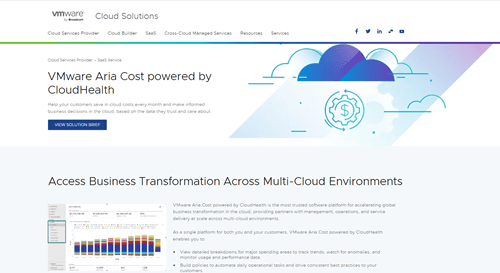
CloudHealth by VMware provides a unified platform for managing SaaS spending across multiple cloud providers. It offers cost optimization, governance, and compliance features to help organizations optimize their cloud investments.
Cleanshelf:
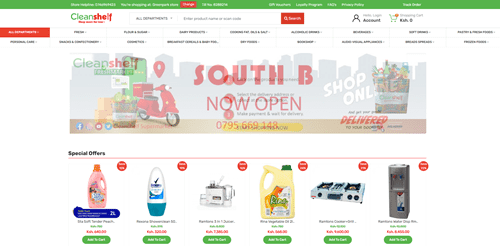
Cleanshelf is a SaaS management platform that specializes in uncovering unused and underutilized subscriptions. It helps organizations reduce wasteful spending and optimize their SaaS portfolio.
Zylo:
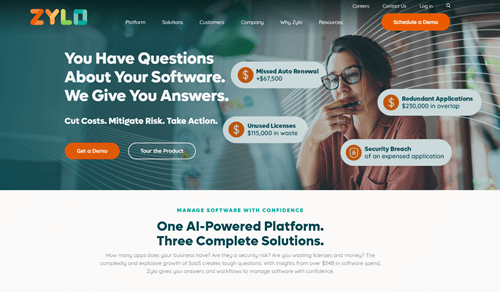
Zylo is a leading SaaS management platform that enables organizations to discover, manage, and optimize their SaaS subscriptions. It offers procurement, usage tracking, cost optimization, and vendor management features.
Torii:
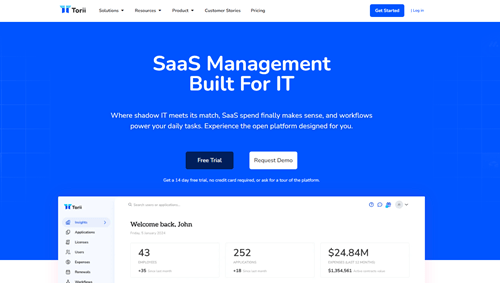
Torii provides SaaS management and optimization solutions, offering features such as automated discovery, usage monitoring, cost allocation, and contract management to help organizations gain control over their SaaS spend.
Intello:
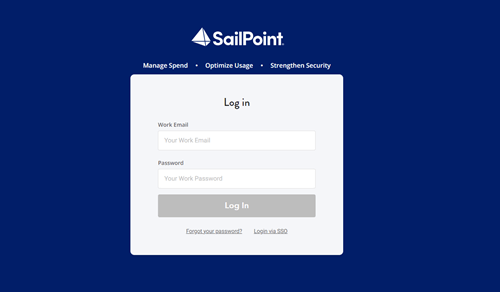
Intello offers SaaS Spend Management solutions with features for automated discovery, usage analytics, cost optimization, and compliance monitoring. It helps organizations track SaaS usage, optimize costs, and ensure compliance with IT policies.
Binadox:
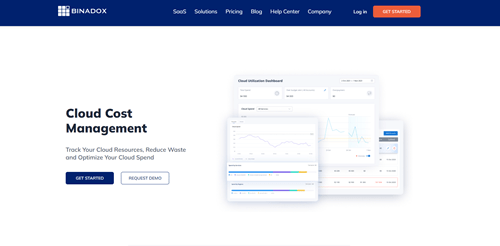
Binadox is a SaaS management platform that offers features for discovering, optimizing, and managing SaaS applications’ compliance. It helps organizations monitor usage, analyze costs, and enforce licensing agreement compliance.
Blissfully:
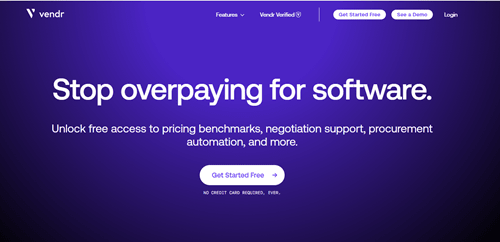
Blissfully provides SaaS management and governance solutions, offering automated discovery, inventory management, cost optimization, and compliance tracking features. It helps organizations streamline SaaS procurement processes and manage their SaaS portfolio effectively.
SaaSOptics:
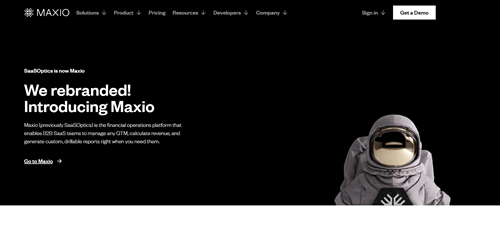
SaaSOptics is a subscription management platform designed specifically for SaaS businesses. It offers subscription billing, revenue recognition, and financial reporting features to help SaaS companies manage their subscriptions and finances efficiently.
Saviynt:
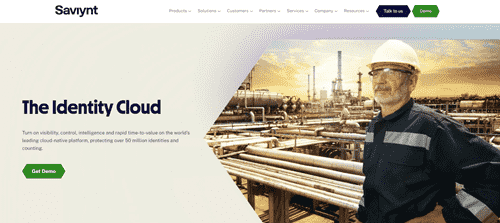
Saviynt offers SaaS management and security solutions, providing features for access governance, risk management, and compliance monitoring across SaaS applications. It helps organizations ensure secure and compliant usage of SaaS tools while optimizing costs.
FAQs:
What is SaaS spend management?
SaaS spend management encompasses the meticulous oversight, assessment, and enhancement of the expenses linked to SaaS (Software as a Service) applications employed within a company. This practice is pivotal for organizations striving to maintain control over their financial outlays while optimizing the utilization of SaaS tools.
Why is SaaS spend management important?
The significance of SaaS spend management lies in its capacity to facilitate cost containment, enhance transparency and oversight, and foster strategic decision-making concerning SaaS investments. By actively managing SaaS expenditures, companies can mitigate financial risks, ensure alignment with budgetary objectives, and allocate resources more judiciously.
What are some common strategies for optimizing SaaS spending?
Various strategies are commonly employed to optimize SaaS spending effectively. These encompass conducting regular audits of SaaS usage and expenditures to identify inefficiencies and cost-saving opportunities, negotiating favorable pricing terms with SaaS vendors, implementing governance frameworks to regulate SaaS procurement and usage, consolidating redundant or underutilized SaaS applications, and promoting the adoption of cost-effective SaaS solutions across the organization.
What are the benefits of using SaaS spend management software?
Utilizing specialized SaaS spend management software offers numerous benefits in streamlining these processes. Such software automates tasks such as SaaS discovery, tracking usage patterns, and identifying avenues for cost optimization. By leveraging these tools, organizations can significantly reduce the time and resources required for effective SaaS spend management, enhancing operational efficiency and cost-effectiveness.
What are some future trends in SaaS spend management?
Several trends are expected to shape the landscape of SaaS spend management. These include the broader adoption of dedicated SaaS spend management solutions, integration with IT Service Management (ITSM) tools to enhance operational alignment, a heightened focus on leveraging SaaS usage analytics for informed decision-making, and the increasing reliance on automation and AI-driven algorithms to provide actionable insights and recommendations.
Conclusion:
In conclusion, effective SaaS Spend Management is essential for organizations seeking to optimize their software investments, control costs, and maximize ROI. By implementing best practices, leveraging innovative tools, and staying ahead of emerging trends, businesses can achieve centralized visibility, streamline procurement processes, and ensure compliance with budgetary constraints. With the continuous evolution of the SaaS landscape, investing in robust SaaS Spend Management practices fosters financial discipline. It empowers organizations to adapt to changing business needs, drive innovation, and maintain a competitive edge in today’s dynamic marketplace.




